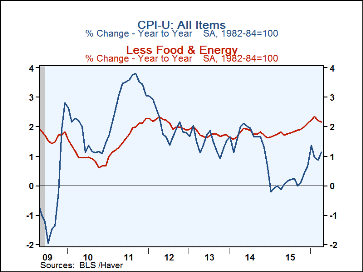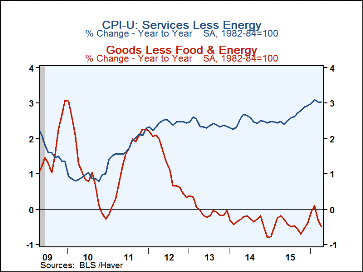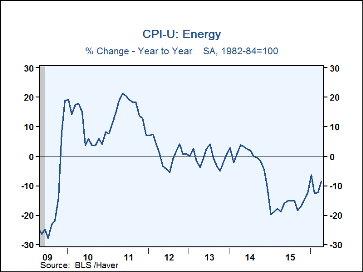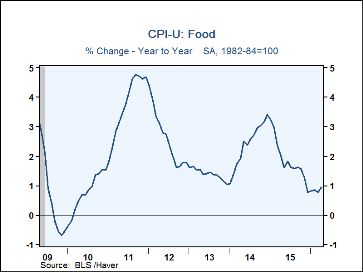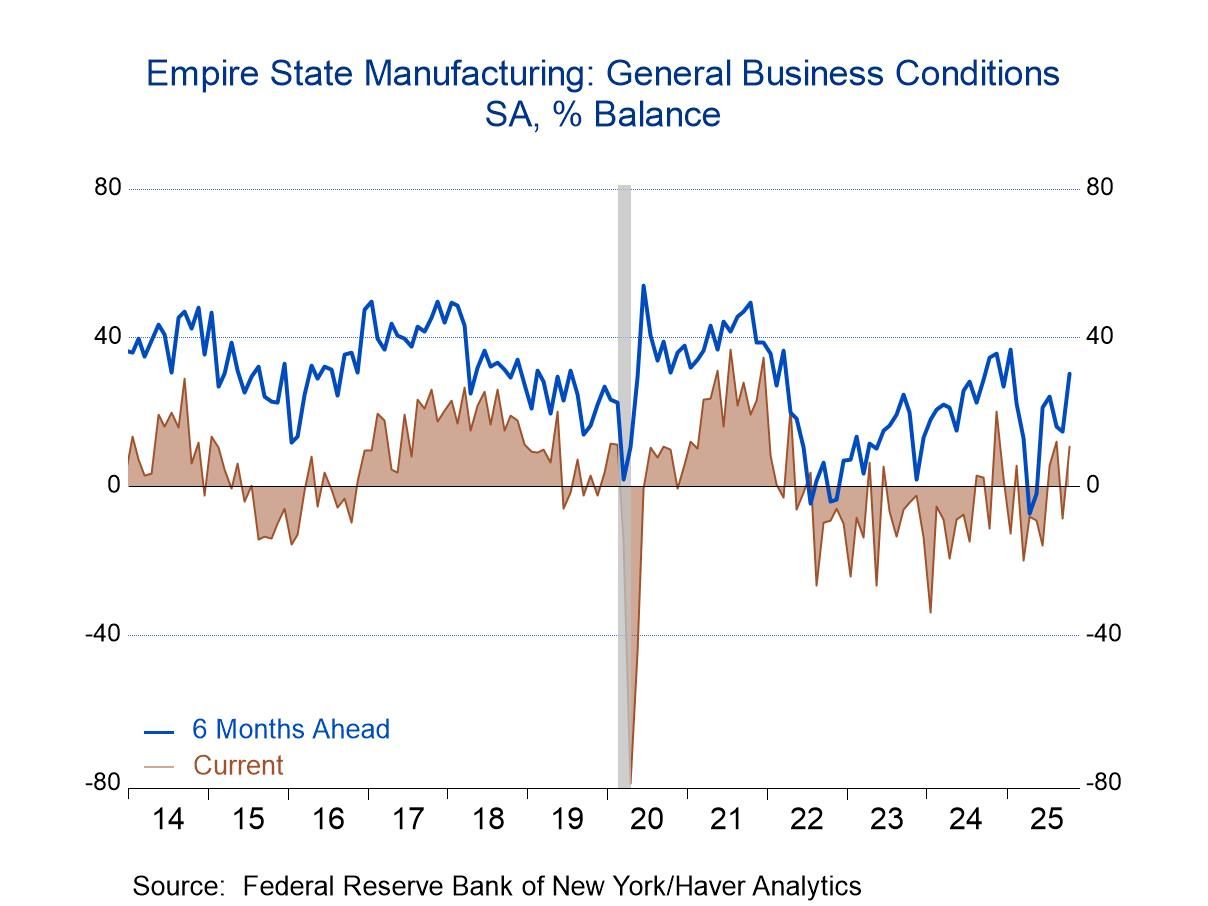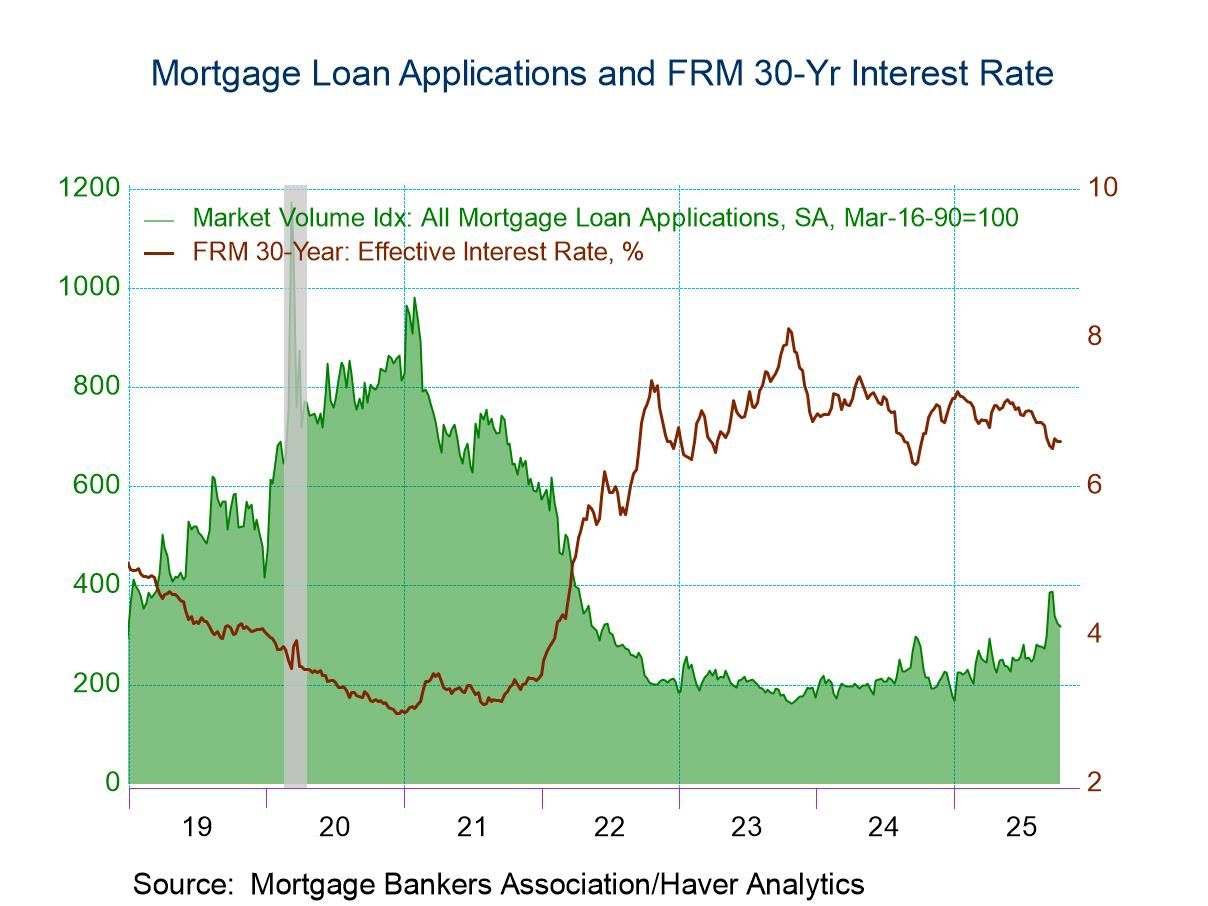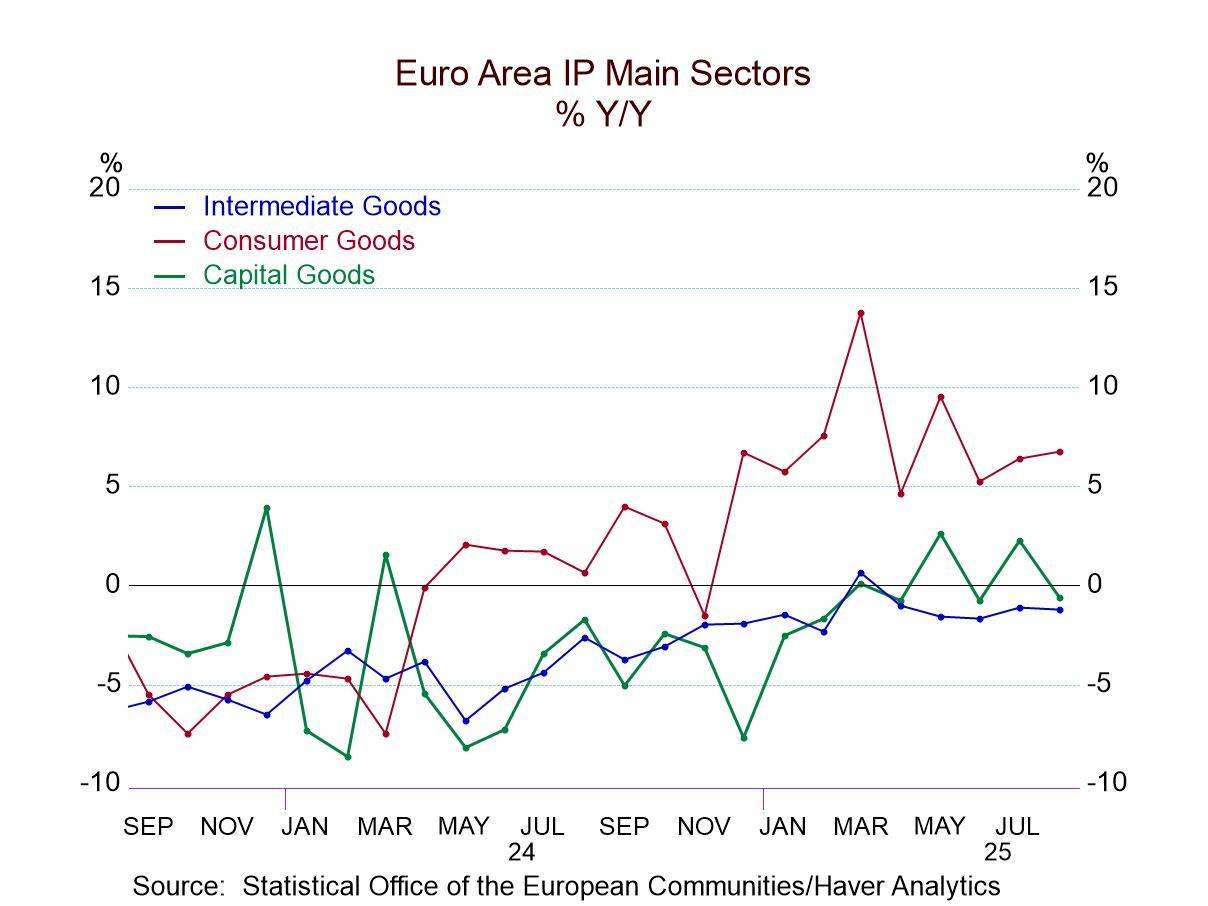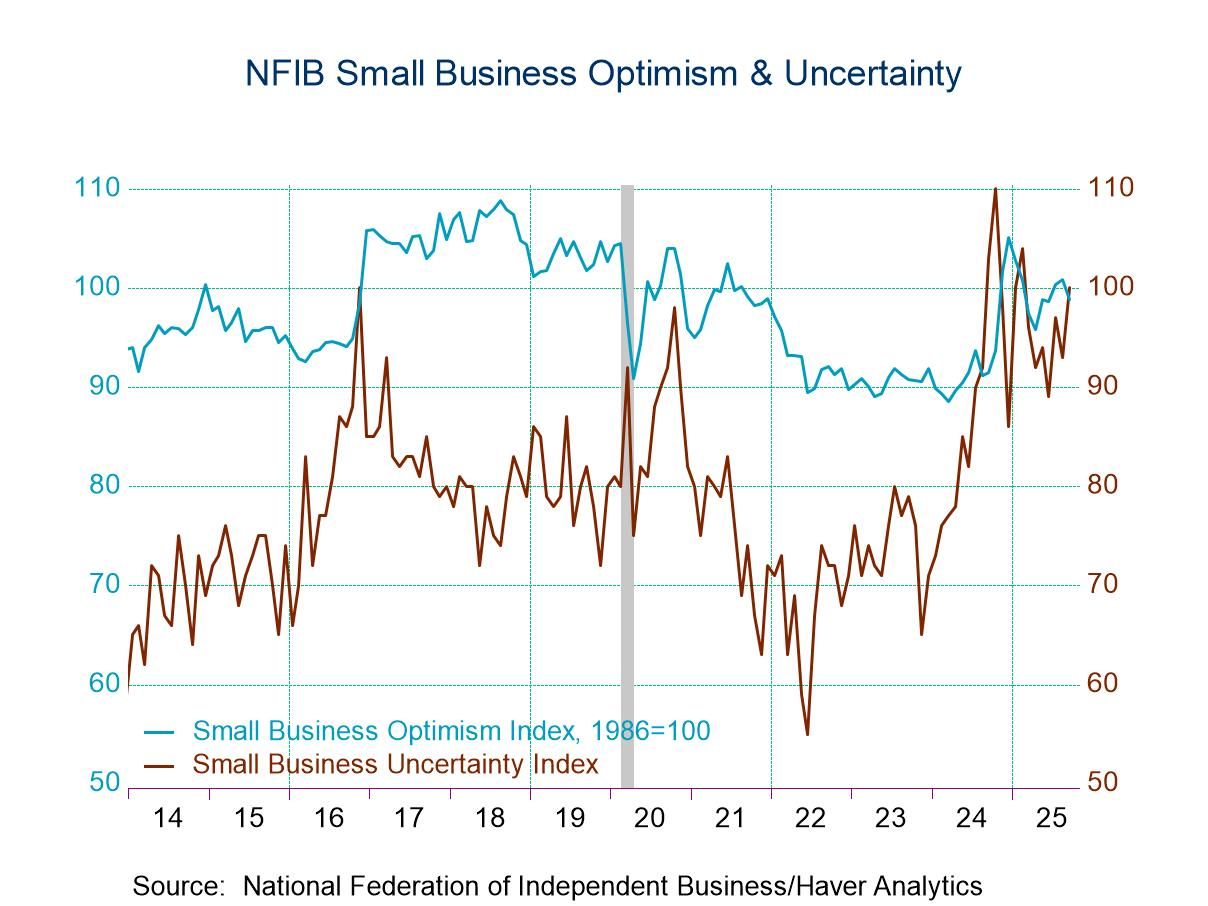 Global| May 17 2016
Global| May 17 2016U.S. CPI Strengthened by Energy Prices; Core Prices Pick Up
by:Tom Moeller
|in:Economy in Brief
Summary
The Consumer Price Index strengthened 0.4% (1.1% y/y) during April following an unrevised 0.1% March rise. It was the largest increase since February 2013. The gain matched expectations in the Action Economics Forecast Survey. A 3.4% [...]
The Consumer Price Index strengthened 0.4% (1.1% y/y) during April following an unrevised 0.1% March rise. It was the largest increase since February 2013. The gain matched expectations in the Action Economics Forecast Survey. A 3.4% increase (-8.7% y/y) in energy pries bolstered last month's increase. Food prices also improved 0.2% (0.9% y/y). The CPI excluding both food & energy matched expectations and increased 0.2% (2.1% y/y) after a 0.1% rise.
The increase in energy prices was the largest rise also since February 2013. It was driven by an 8.1% jump (-13.8% y/y) in gasoline prices. Fuel oil prices also rose 1.9% (NSA, -27.5% y/y). Natural gas prices increased 0.6% (-6.5% y/y), but electricity costs fell 0.3% (-2.1% y/y).
Food prices improved 0.2% (0.9% y/y) as cereal & bakery product prices gained 0.3% (0.2% y/y). Meat poultry & fish product prices ticked 0.1% higher, but fruit & vegetable prices declined 0.5% (+2.1% y/y).
Prices for services other than energy increased 0.3% (3.0% y/y) following a 0.2% rise. Recreation services prices rose 0.4% (3.2% y/y) Transportation services prices strengthened 0.7% (3.3% y/y as motor vehicle insurance costs spiked 1.2% (6.0% y/y). Shelter prices gained 0.3% (3.2% y/y) as the owners' equivalent rent of primary residences rose 0.3% (3.1% y/y). Medical care service prices also improved 0.3% (3.1% y/y). The cost of tuition, school fees & childcare care increased 0.2% (3.0% y/y).
Goods prices excluding food & energy eased 0.1% (-0.5% y/y), down for a second straight month. Household furnishings & supplies prices fell 0.4% (-2.0% y/y). Apparel prices were off 0.3% (-0.6% y/y) as were new vehicles prices (0.0% y/y). Medical care commodity prices increased 0.5% (2.7% y/y). Recreation goods prices rose 0.2% (-2.6% y/y), moderated by a 1.3% decline (-8.8% y/y) in video & audio product costs.
The consumer price data is available in Haver's USECON database while detailed figures can be found in CPIDATA. The expectations figure is from Action Economics and is found in the AS1REPNA database.
| Consumer Price Index, All Urban Consumers (%) | Apr | Mar | Feb | Apr Y/Y | 2015 | 2014 | 2013 |
|---|---|---|---|---|---|---|---|
| Total | 0.4 | 0.1 | -0.2 | 1.1 | 0.1 | 1.6 | 1.5 |
| Total less Food & Energy | 0.2 | 0.1 | 0.3 | 2.1 | 1.8 | 1.7 | 1.8 |
| Goods less Food & Energy | -0.1 | -0.2 | 0.3 | -0.5 | -0.5 | -0.3 | -0.0 |
| Services less Energy | 0.3 | 0.2 | 0.3 | 3.0 | 2.6 | 2.5 | 2.4 |
| Food | 0.2 | -0.2 | 0.2 | 0.9 | 1.9 | 2.4 | 1.4 |
| Energy | 3.4 | 0.9 | -6.0 | -8.7 | -16.7 | -0.3 | -0.7 |
Tom Moeller
AuthorMore in Author Profile »Prior to joining Haver Analytics in 2000, Mr. Moeller worked as the Economist at Chancellor Capital Management from 1985 to 1999. There, he developed comprehensive economic forecasts and interpreted economic data for equity and fixed income portfolio managers. Also at Chancellor, Mr. Moeller worked as an equity analyst and was responsible for researching and rating companies in the economically sensitive automobile and housing industries for investment in Chancellor’s equity portfolio. Prior to joining Chancellor, Mr. Moeller was an Economist at Citibank from 1979 to 1984. He also analyzed pricing behavior in the metals industry for the Council on Wage and Price Stability in Washington, D.C. In 1999, Mr. Moeller received the award for most accurate forecast from the Forecasters' Club of New York. From 1990 to 1992 he was President of the New York Association for Business Economists. Mr. Moeller earned an M.B.A. in Finance from Fordham University, where he graduated in 1987. He holds a Bachelor of Arts in Economics from George Washington University.


